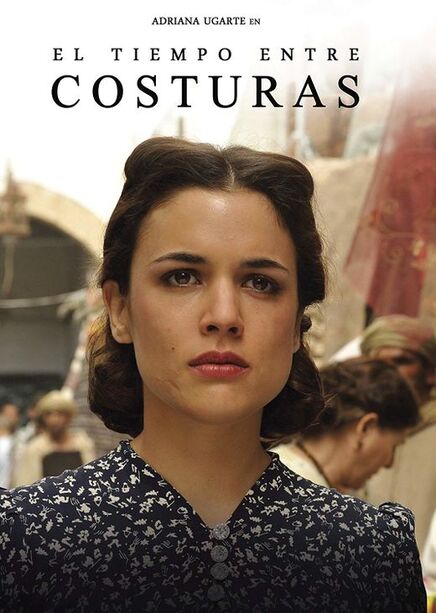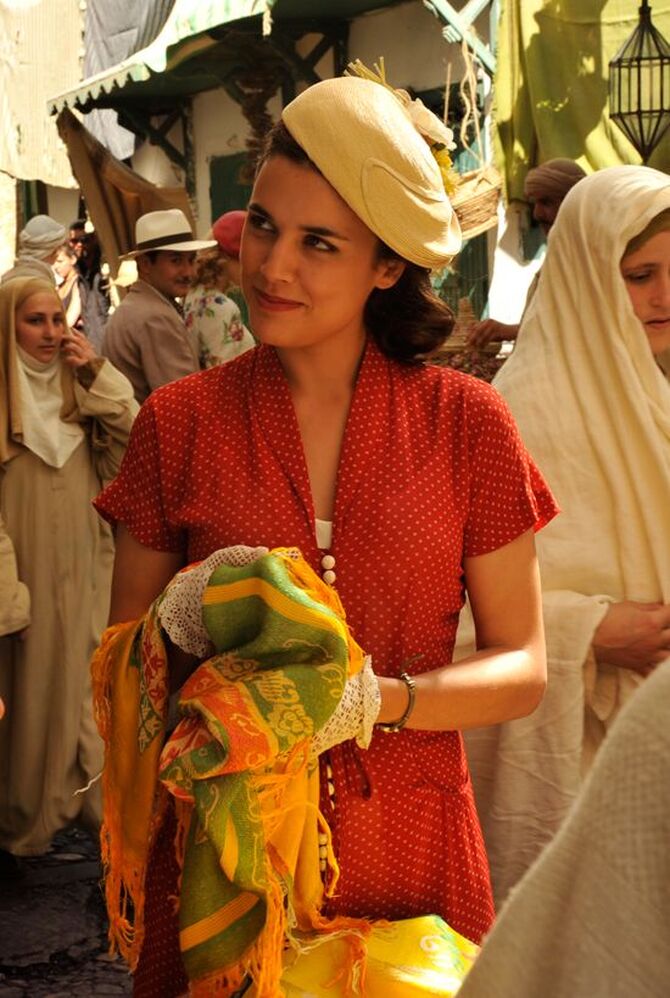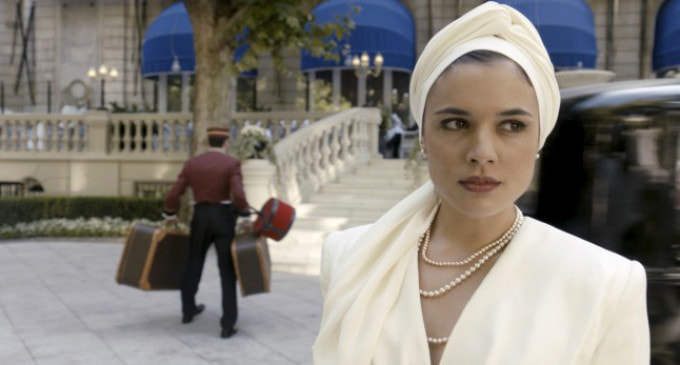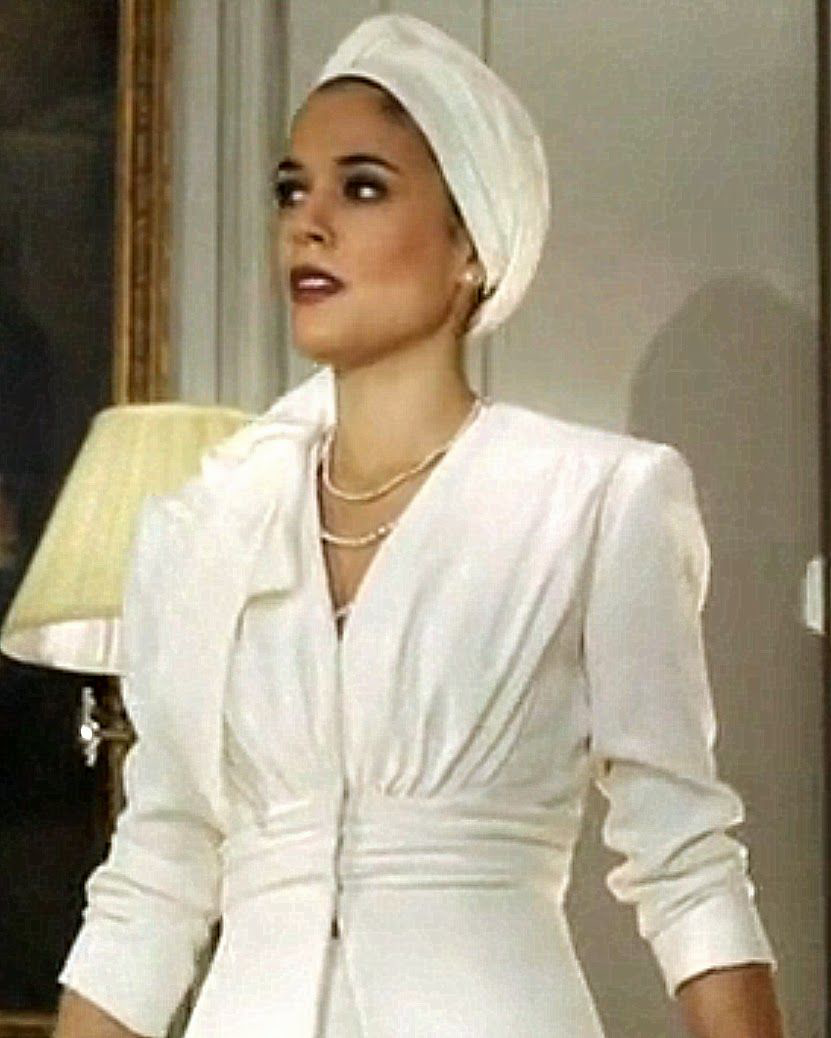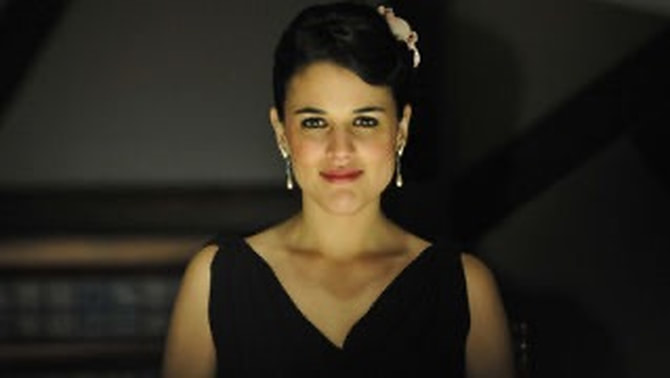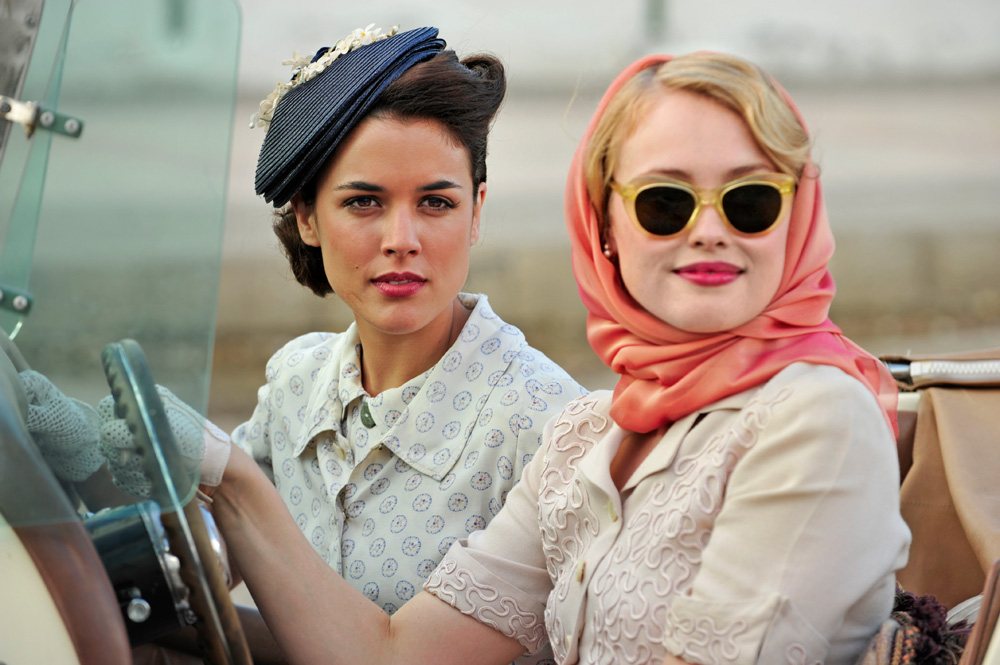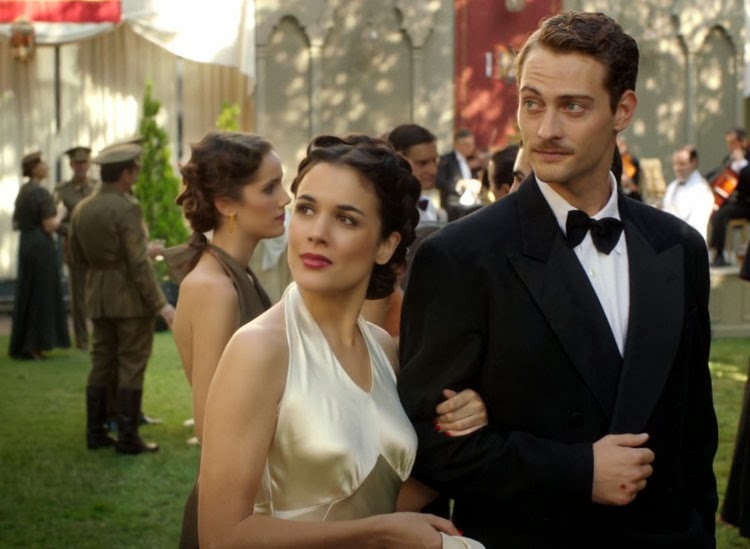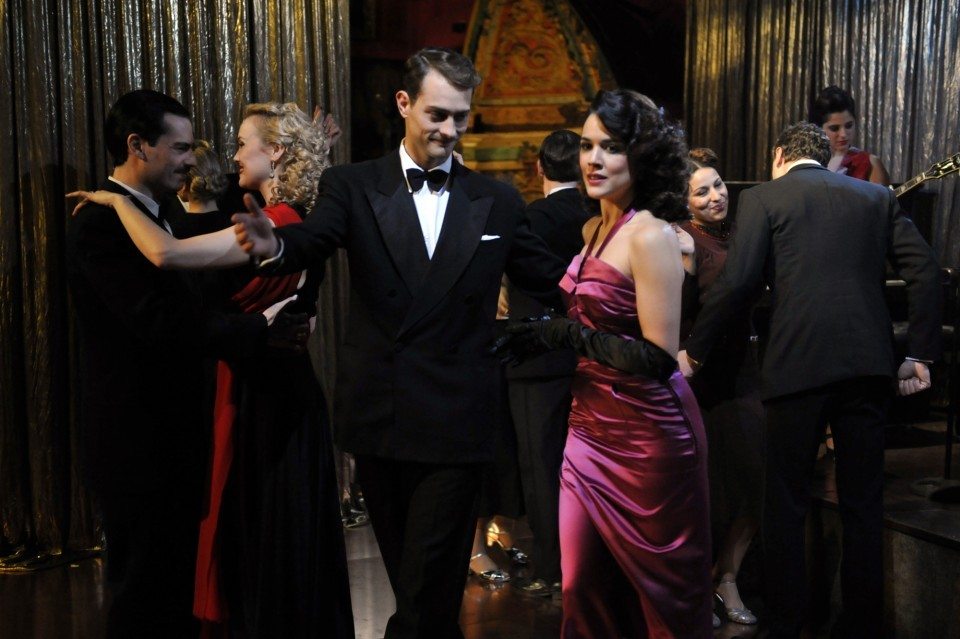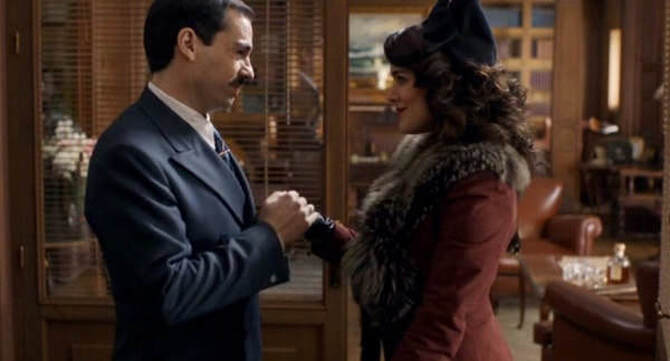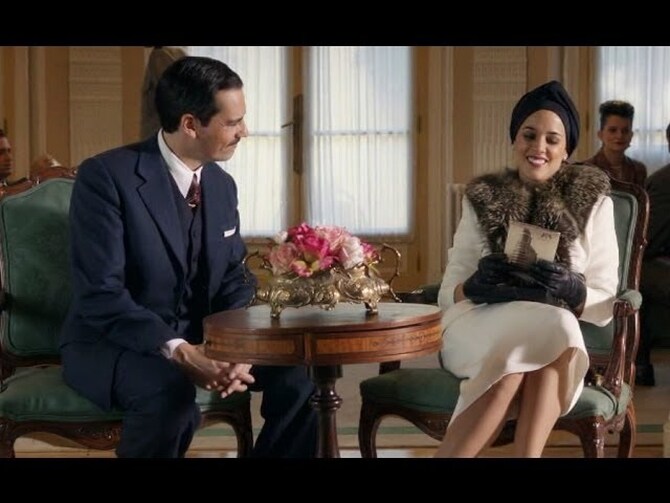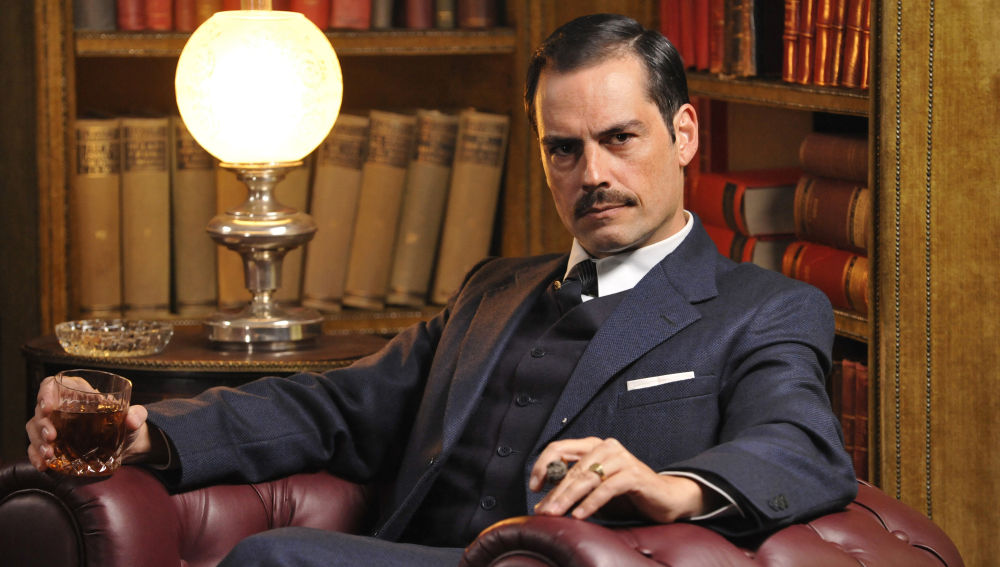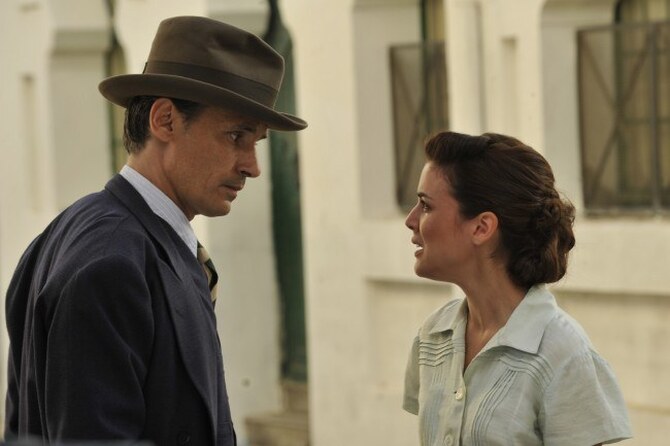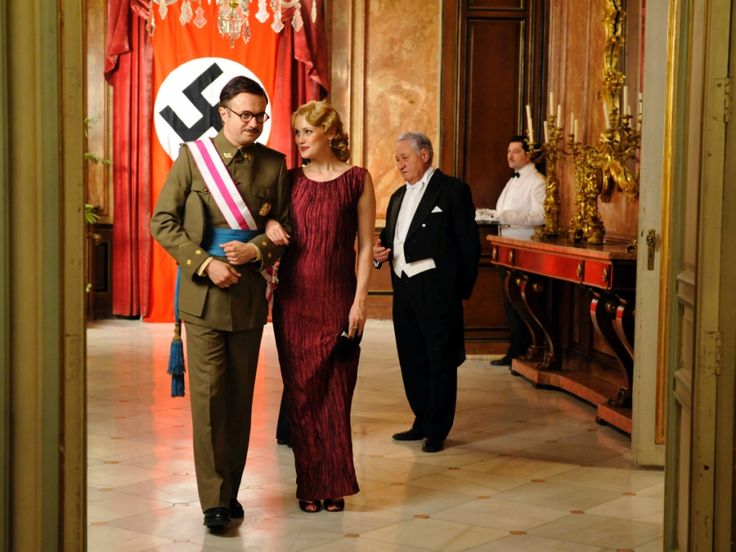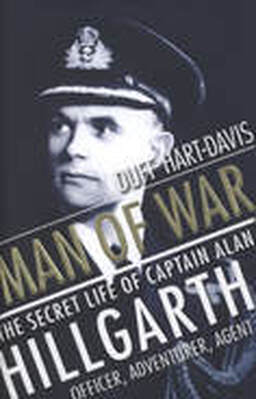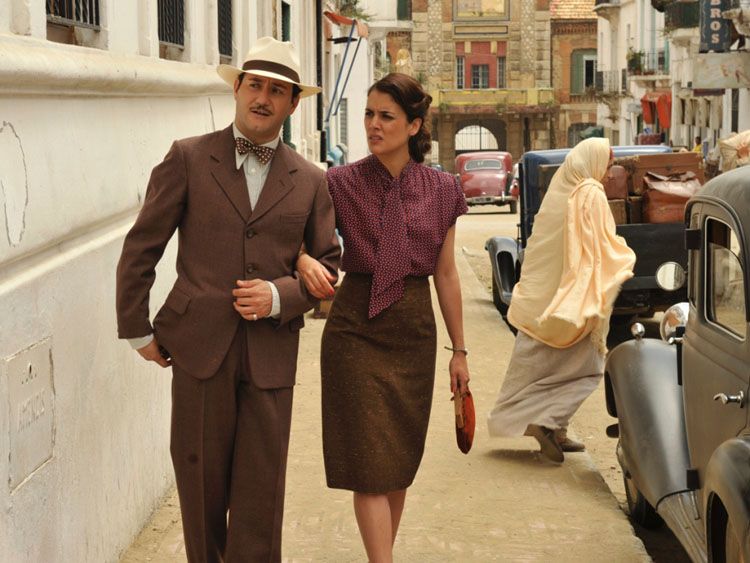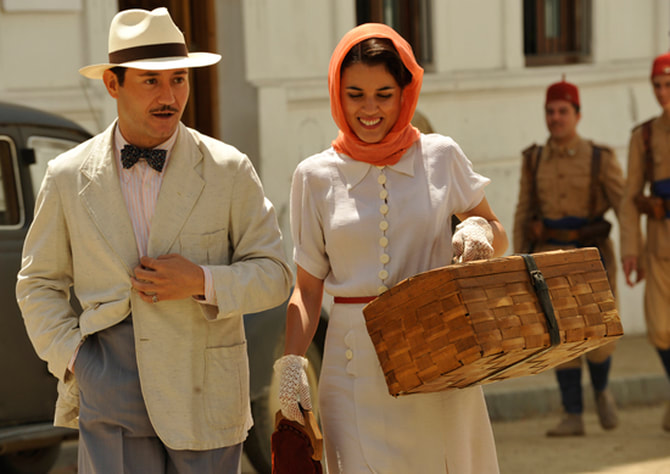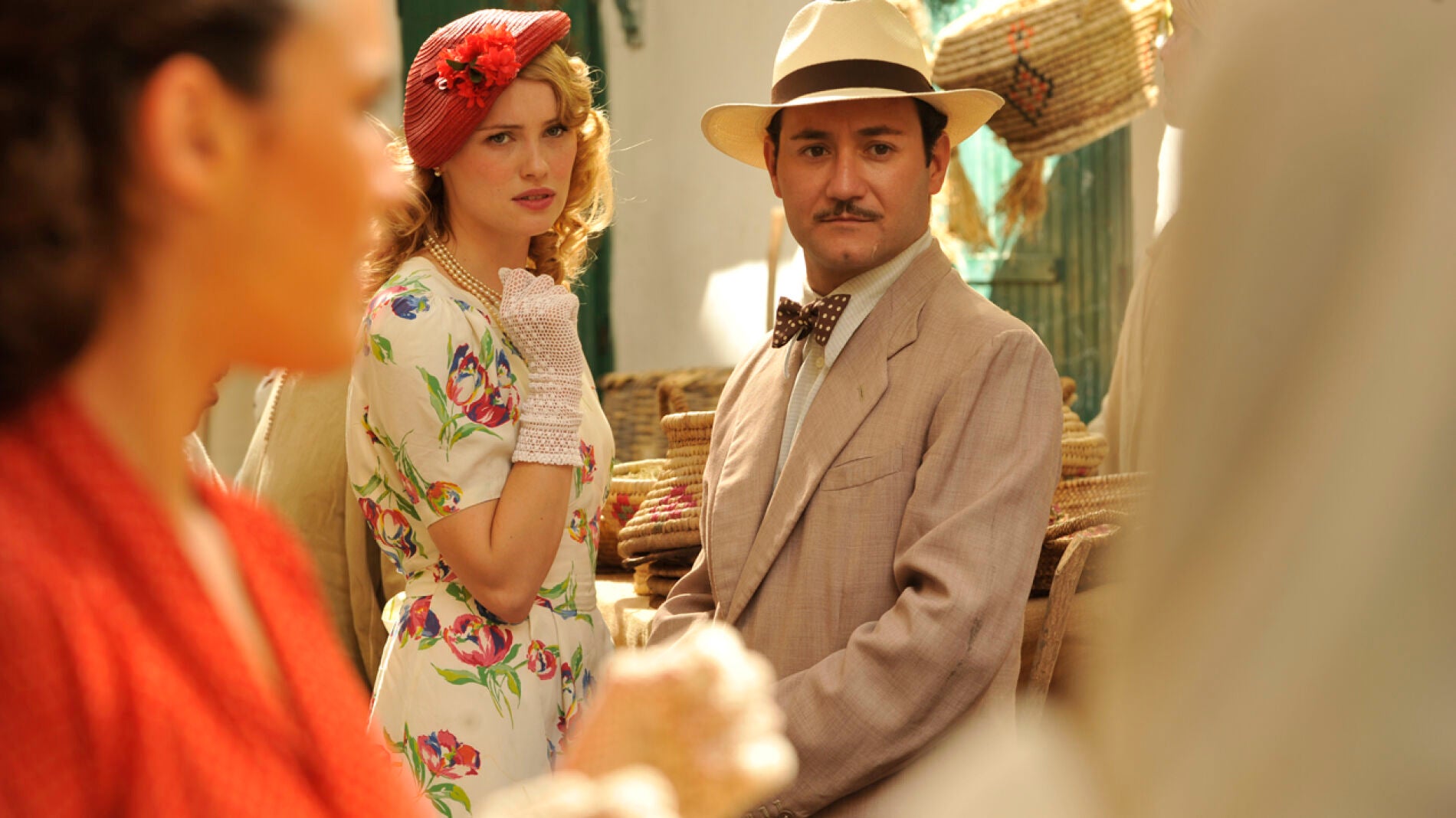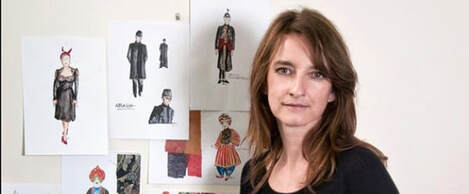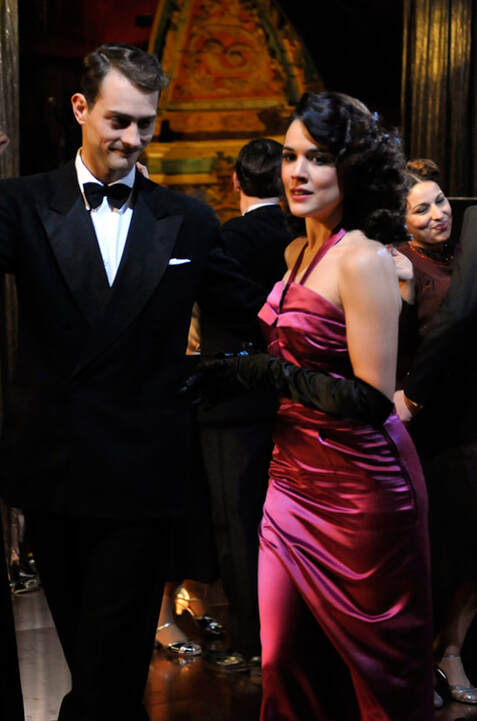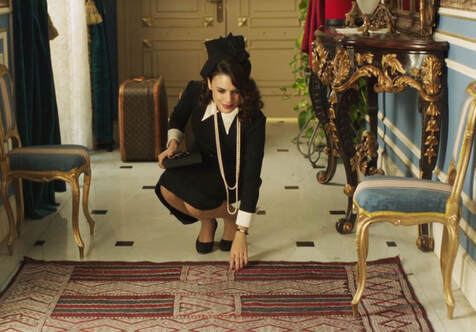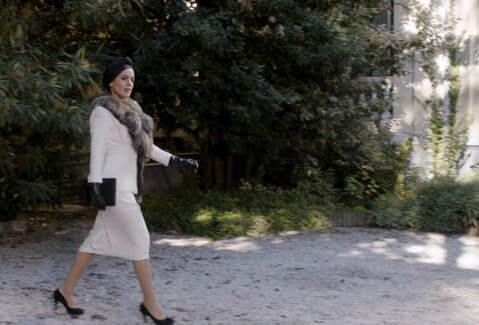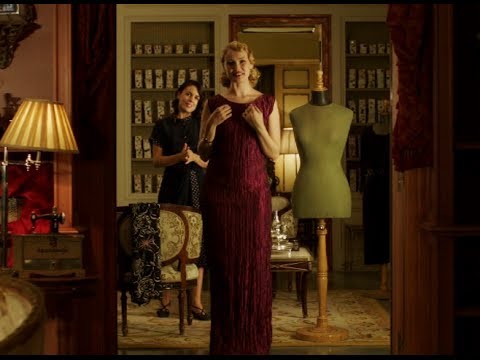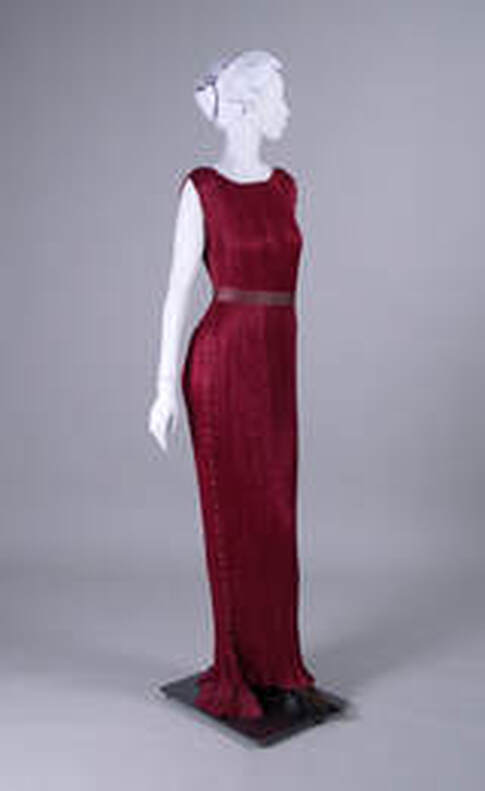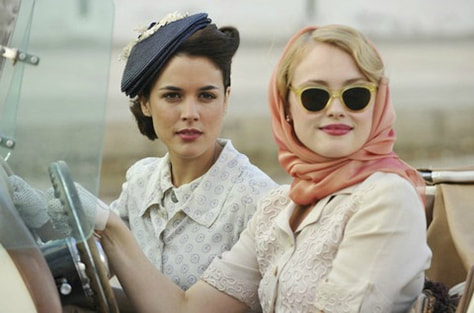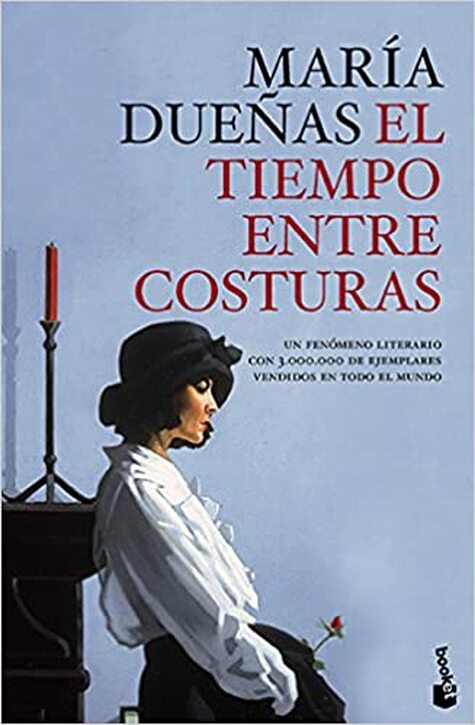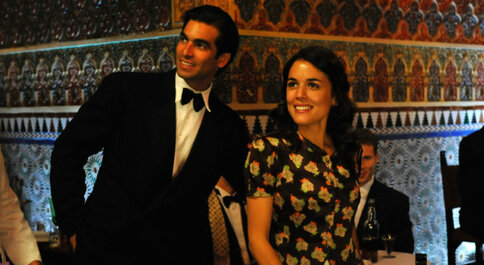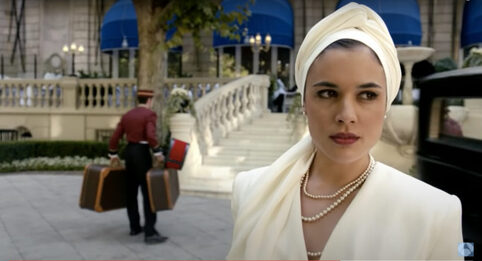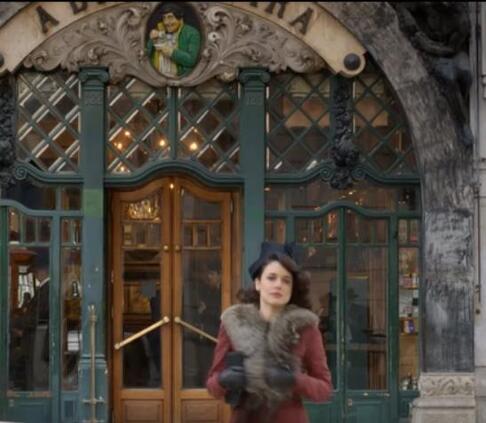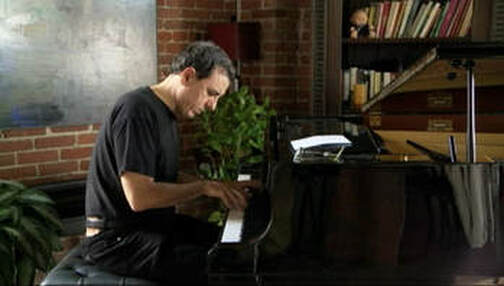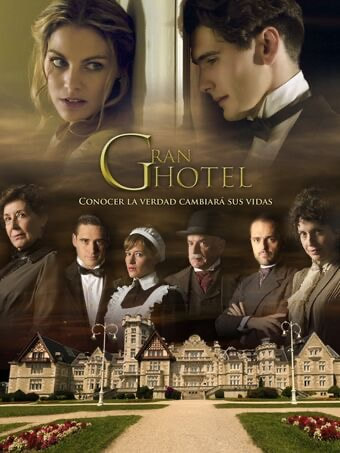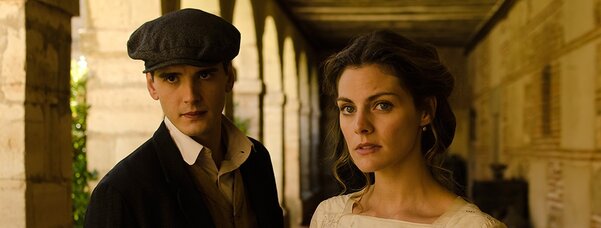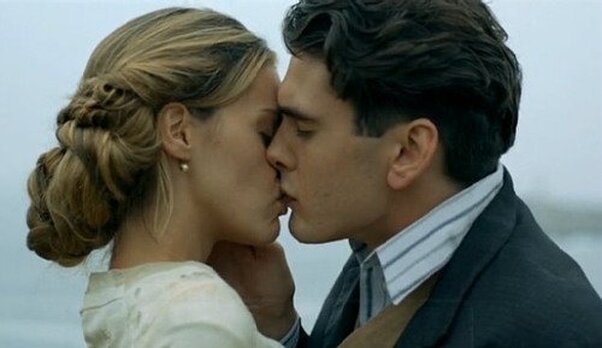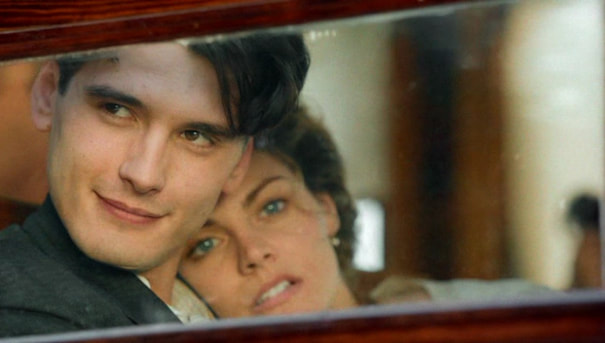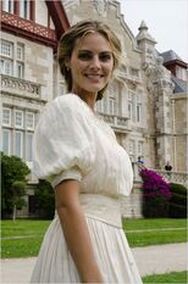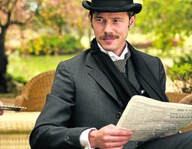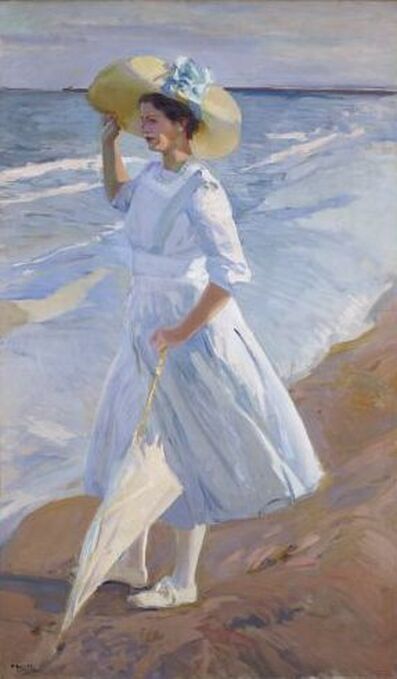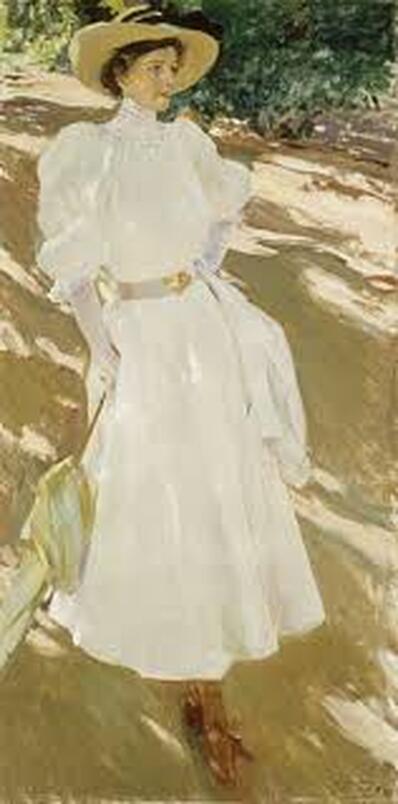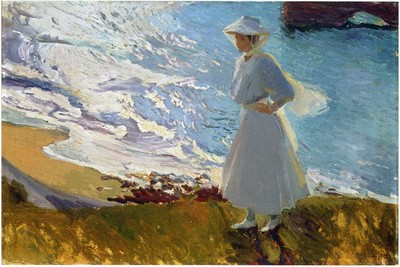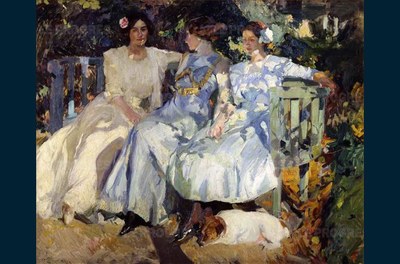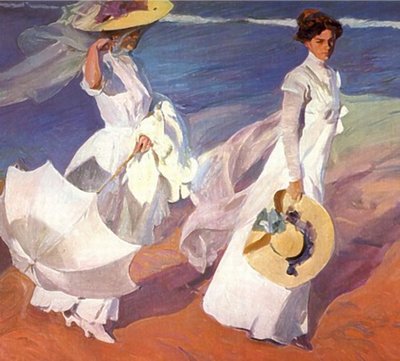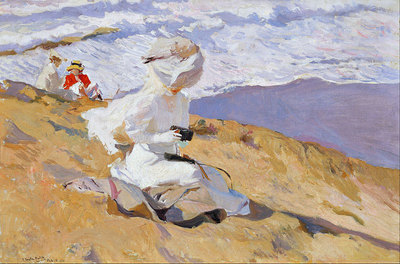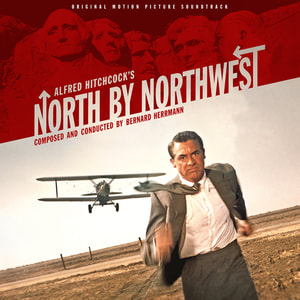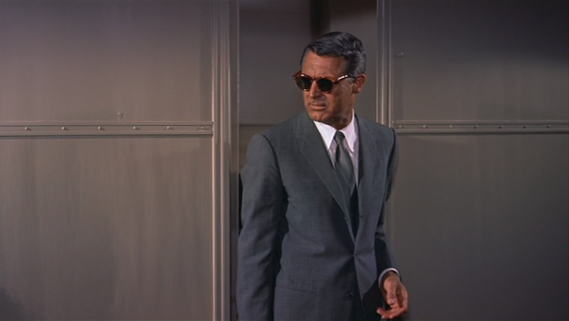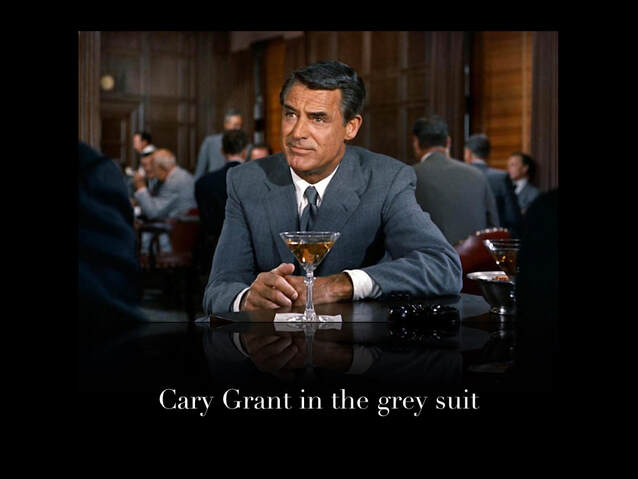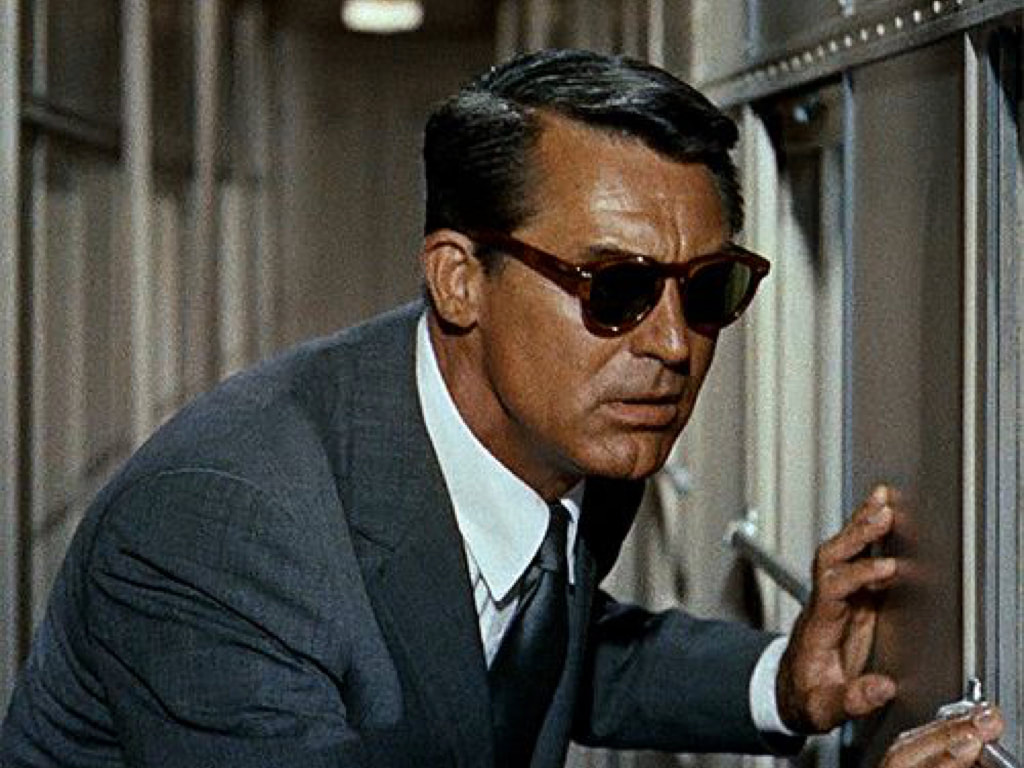“Me llamo Sira Quiroga y soy costurera…nunca imaginé que mi destino sería jugarme la vida cruzando la ciudad de un país extranjero con un traje de pistolas sobre mi piel. Pero ahora sé que el destino es la suma de todas las decisiones que tomamos en nuestra vida…incluso las que en su momento nos parecen insignificantes. En mi caso, por lejano que me parezca ahora todo comenzó con algo tan pequño como aprender a enhebrar una aguja.” Elegant Personage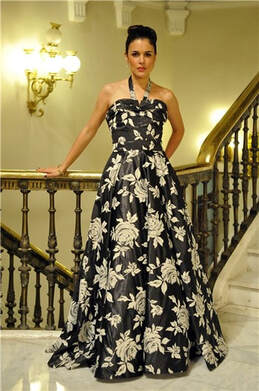
Sira Quiroga by Adriana Ugarte
It's her story, the story of love, loss, deception, the story of survival, but most importantly, the story of transformation of a woman, not of cinderella to princess, but rather the transformation of an ordinary girl from a humble family background into a woman of class and courage, both because of fate, and her own choice. And as a costurera (Spanish: seamstress), Sira Quiroga's transformation is best told by the evolution of her wardrobe: in the 11 episodes, Sira dressed more than 230 outfits(it's said she wore 34 outfits just in the first episode alone), from the shapeless flowered patterned cotton dresses to the much more fitting and sofisticated suits and dresses, all well made, almost always transmitted the sense of elegance Sira acquired along her adventure.
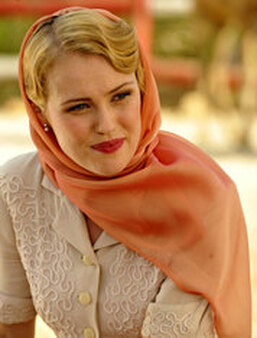 Rosalinad Fox by Hannah New Rosalinad Fox by Hannah New
Rosalinad Fox by Hannah New
The real Rosalinda Powell Fox came from a British aristocratic family, when she was young, she liked to drive a small red Austin car along the beach in North Africa, and when she was old, she had to keep a red Coco Chanel lipstick with her in South Spain.
Beautiful, elegant, intelligent, strong willed, well read, well traveled, she is like a prototype of femme fatale spy. Her character took her to North Africa, and fate made her meet the love of her life, the Spaniard Juan Luis Beigbeder, and lived the life of a permanent exile. The actress Hannah New with her sweet clean look and impeccable Spanish with a very charming accent revived this English upper class woman who made the first prime minister of Franco government willing to sacrifice his career for love. 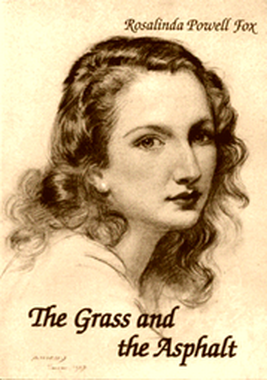 Book cover: The Grass and the Asphalt, written by Rosalinda Powell Fox Book cover: The Grass and the Asphalt, written by Rosalinda Powell Fox
Biography of Rosalinda Powell Fox in Spanish written by Domingo del Pino:
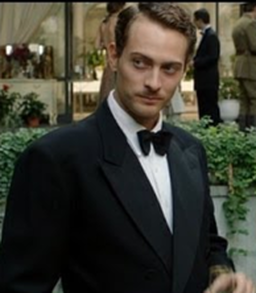 Marcus Logan by Peter Vives Marcus Logan by Peter Vives
Marcus Logan by Peter Vives
In another popular Spanish TV Series Velvet, Peter Vives had the misfortune of playing the bad guy Carlos who was trying everything to get Ana Ribera(played by Paula Echevarria), the girl forever in love with her boss Albert Marquez(played by Miguel Angel Silvestre), and it seems Peter Vives acted somewhat awkwardly, perhaps he is one of those actors who can only play heroes, so in the serie el tiempo entre costuras, he not only did much a better job playing Marcus Logan, the James Bond like character, and also made a much more pleasing pair with Sira. He looks suitably elegant in the epoque outfits, such as suspenders, and the bigote(Spansish for moustache) does not kill it.
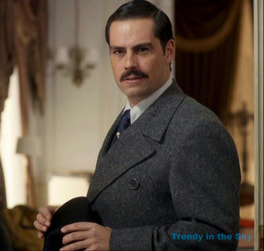
Manuel da Silva by Filipe Duarte
The most engaging and tragic character in the serie, the Portugese entrepreneur Manuel da Silva, who wanted to take advantage of the war to multiply his wealth and ended losing his own life. But he did enjoy the most elegant wardrobe among the men in the serie, and unlike Marcus Logan who was supposed to be on the run and travel light, Manuel da Silva as a Portugese wealthy business man had more varied outfits: from single breast navy suit to double breast grey coat, from wide lapeled black dinner jacket to the also wide lapeled dark grey business suit, in the short time he appeared in the serie and in Sira's life, he shined.
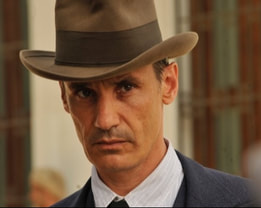 Claudio Vazquez by Francesco Garrido Claudio Vazquez by Francesco Garrido
Claudio Vazquez by Francesco Garrido
He is always in control, even when he slowly fell in love with Sira. Only when he said farewell to Sira for the last time, his hands on the staircase railing said everything. It was still a time when a chief police officer dressed well, and Claudio carried those conservative and well matching 3 piece suits very naturally.
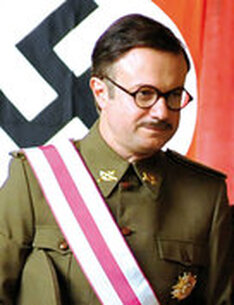 Juan Luis Beigbeder by Tristan Ulloa Juan Luis Beigbeder by Tristan Ulloa
Juan Luis Beigbeder by Tristan Ulloa
It was not obvious. He was not tall, not handsome, he worn those boring black eyeglasses which made him look more like the last Chinese Emperor than a Spanish prime minister, and he did not have a distinguished voice, but Juan Luis Beigbeder(31 March 1888-6 June 1957), the romantic high ranking official whose sentiments carry more weight than his political career played by Tristan Ulloa, has a sutble elegance to him, in the way he spoke and carried himself.
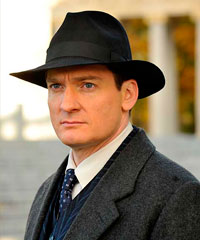 Alan Hillbarth by Ben Tample Alan Hillbarth by Ben Tample
Alan Hillbarth by Ben Tample
Alan Hillbarth(7 June 1899-28 February 1979) is one of the main characters not created by Maria Dueñas but existed in the real history and figured prominently during the Spanish Civil War, the most important period in Sira's life in the serie. Like Ian Fleming, the creator of James Bond, Alan Hillbarth also worked for British Naval Intelligence and was an author, though he ranked much higher than Ian Fleming and played more significant role.
In his book Men of War, Hillgarth wrote that "adventure was once a noble appellation borne proudly by men such as Raleigh and Drake . . . [but is now] reserved for the better-dressed members of the criminal classes.", interestingly, it can almost serves as footnote for the wardrobe of this MI6 like British intelligence officer in the serie played excellently by Ben Temple: it seemed containing just one suit, a conservative dark grey striped suit of wide lapels, with a few different colored ties, with or without a white pocket square, neatly tucked. 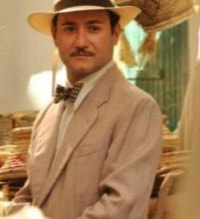
Félix Aranda by Carlos Santos
He is as campy as it is possible, but yet funny, intelligent, understanding. He is guardian angel of Sira.
The costumes
"Llena de vitalidad, fuerza, color y glamour"(full of vitality, force, color and glamor). This is how Bina Daigeler imagined Sira's wardrobe would be, and how we have seen in the serie. And they were made by Maison Cornejo in Madrid.
For Sira
For Rosalinda
Delpho dress of Mariano Fortuny(1871-1949): Delphoe dress or Delpho Gown is a pleated silk dress created by Spanish designer Mariano Fortuny in his studio in Venice, Italy, inspired by and named after a classic greek statue, the charioteer of delphi. This type of dress was first created by him in about 1907 until his death, when his widow destroyed both the formula of fabric dyeing and pleating technique.
The story
The serie is based on novel of same name written by Spanish writer María Dueñas
The story begins in 1934. Sira Quiroga is a young and attractive seamstress living a humble life in Madrid with her single mother Dolores. During a festival she meets Ignacio, an aspiring gentleman applying for a position in the Spanish civil service who encourages her to learn skills like typing to secure a better future in the unstable time they are living in. At the typewriter shop, she falls in love with the handsome salesman Ramiro Arribas and lives with him. Meanwhile, Gonzalo Alvarez, one of the wealthiest men in Madrid, decides to recognize Sira as his lawful daughter by giving her money and jewels before abandoning Madrid. Ramiro persuades Sira to elope with her with her new fortune to look for a better future in Tangier, Morocco, where he spends her money willfully and abandons her when she is pregnant, taking all her money, leaving all bills unpaid. With the help of a police officer, Sira is given a year to pay the hotel before she is sent to prison and is given shelter in the guesthouse of Candelaria Matutera, a woman loves her and helps her building a new life in Morocco by becoming a seamstress again. As the war goes on, Sira, a very successful seamstress is now also a woman of value for Spain who wants to keep neutral. Sira return to Madrid, where she takes on a new identity to embark upon the most dangerous undertaking of her career. As the couturier of choice for an eager clientele of Nazi officers' wives and mistresses, Sira becomes embroiled in a twilight world of espionage and political conspiracy rife with love, intrigue, and betrayal. The ambience
Time: 1930s-1940s
Places: Tangier and Tetuan Morocco, Madrid, Spain, Estoril and Lisboa Portugal The music
The music of the serie is composed by Cesar Benito who was born in Granada and grew up in Marbella, in Southern Spain.
“The theme is Spanish, but I do not want it to be outdated Spanish, but rather modern Spanish. Thus said the composer Cesar Benito about theme of Sira: It will be played almost always when Sira appears in a scene or when she is sewing, and I try to make some variations for times like when Sira is in hospital...” - Cesar Benito. Further interest
Articles
Books
Websites
Official website of María Dueñas: http://www.mariaduenas.es/
0 Comments
Year: 2011-2013 Writer: Ramon Campos Directors: Carlos Sedes, Silvia Quers Music: Lucio Godoy Costume design: Helena Sanchís Stars: Yon González, Amaia Salamanca Country: Spain Language: Spanish The story1905, Northern Spain. A young boy of humble background Julio Olmedo came to the luxurious Grand Hotel to look for his sister Cristina, who worked there as a maid and had not written to him for too long. Although he was told Cristina was fired for theft, Julio thought something has happened to her and was determined to find her. He mader himself a waiter under the name Julio Espinosa to investigate his sister's disappearance, thus met Alicia Alarcón, the younger daughter of the hotel's owner Doña Teresa who decided to help him. And they fell in love. Original idea and screenplay  Ramón Campos Ramón Campos 1975, A Coruña, Galicia, Spain producer, writer He is co-founder of Bambu Producciones, which is the creator of some of the most elegant spainish tv series including: Gran Hotel, Velvet, Seis Hermanas, Gran Reserva. "Dicen por ahí que el cine es como las carreras de coches de época y la tele la Fórmula Uno, a toda ostia, y eso es lo que me entusiasma". 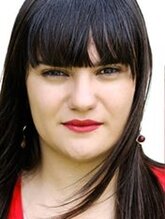 Gema R. Neira Gema R. Neira 1982, Ferrol, A Coruña, Galicia, Spain  Teresa Fernández-Valdés Teresa Fernández-Valdés 1980, Galicia, Spain, producer, writer She is co-founder of Bambu Producciones, which is the creator of some of the most elegant spainish tv series including: Gran Hotel, Velvet, Seis Hermanas, Gran Reserva. The personageThe ambiance The time: 1905-1907 The place: The story took place in a fictional place in Northern Spain called Cantaloa, which is in reality Cantabria Province, and the main location for Gran Hotel is the Palacio de la Magdalena in Santander. The costume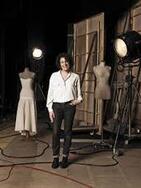 Helena Sanchís Helena Sanchís Helena Sanchís is the director of costume design for the series, whose seamstresses make most of the outfits of the characters in her workshop in Villaviciosa de Odón, a small town close to Madrid. According to her, her main inspiration and reference point are the artworks of Spanish painter Joaquin Sorolla (Valencia; 27 Februray 1863-Cercedilla, 10 August 1923), which is most obvious in the wardrobes of Alicia. 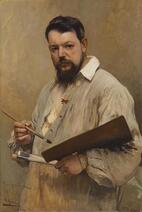 Joaquin Sorolla portrait by Jose Jimenez Aranda, 1901 Joaquin Sorolla portrait by Jose Jimenez Aranda, 1901 Joaquín Sorolla y Bastida ( 27 February 1863 – 10 August 1923) was a Spanish painter. Sorolla excelled in the painting of portraits, landscapes and monumental works of social and historical themes. His most typical works are characterized by a dexterous representation of the people and landscape under the bright sunlight of Spain and sunlit water. The music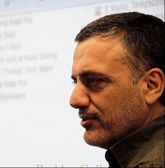 Lucio Godoy Lucio Godoy Spanish-Argentinian film composer & music producer Watch Gran HotelWatch full episodes on Amazon Prime Video
Year: 1959 Writer: Ernest Lehman Director: Alfred Hitchcock Music: Bernard Herrmann Costume design: Bergdorf Goodman for Eva Marie Saint's wardrobe Stars: Cary Grant, Eva Marie Saint, James Mason Country: USA Language: English North by Northwest is a tale of mistaken identity, with an innocent man pursued across the United States by agents of a mysterious organization trying to prevent him from blocking their plan to smuggle out microfilm which contains government secrets. This is one of several Hitchcock films which feature a music score by Bernard Herrmann and an opening title sequence by graphic designer Saul Bass, and it is generally cited as the first to feature extended use of kinetic typography in its opening credits. The screenplay was by Ernest Lehman, who wanted to write "the Hitchcock picture to end all Hitchcock pictures". North by Northwest is listed among the canonical Hitchcock films of the 1950s and is often listed among the greatest films of all time. It was selected in 1995 for preservation in the National Film Registry by the United States Library of Congress as being "culturally, historically, or aesthetically significant".
The story:John Russell Taylor's biography Hitch: The Life and Times of Alfred Hitchcock (1978) suggests that the story originated after a spell of writer's block during the scripting of another film project: Alfred Hitchcock had agreed to do a film for MGM and they had chosen an adaptation of the novel The Wreck of the Mary Deare by Hammond Innes. Composer Bernard Herrmann had recommended that Hitchcock work with his friend Ernest Lehman. After a couple of weeks, Lehman offered to quit saying he didn't know what to do with the story. Hitchcock told him they got along great together and they would just write something else. Lehman said that he wanted to make the ultimate Hitchcock film. Hitchcock thought for a moment then said he had always wanted to do a chase across Mount Rushmore. Lehman and Hitchcock spitballed more ideas: a murder at the United Nations Headquarters; a murder at a car plant in Detroit; a final showdown in Alaska. Eventually they settled on the U.N. murder for the opening and the chase across Mount Rushmore for the climax. For the central idea, Hitchcock remembered something an American journalist had told him about spies creating a fake agent as a decoy. Perhaps their hero could be mistaken for this fictitious agent and end up on the run. They bought the idea from the journalist for $10,000. In fact, Hitchcock had been working on the story for nearly nine years prior to meeting Lehman. Otis C. Guernsey was the American journalist who had the idea which influenced Hitchcock, inspired by a true story during World War II when British Intelligence obtained a dead body, invented a fictitious officer who was carrying secret papers, and arranged for the body and misleading papers to be discovered by the Germans as a disinformation exercise called Operation Mincemeat. Guernsey turned his idea into a story about an American salesman who travels to the Middle East and is mistaken for a fictitious agent, becoming "saddled with a romantic and dangerous identity." Guernsey admitted that his treatment was full of "corn" and "lacking logic", and he urged Hitchcock to do what he liked with the story. Hitchcock bought the 60 pages for $10,000. The film clip: "I do not discuss love on an empty stomach The costume design:In the film Cary Grant's character had a very simple wardrobe. Unlike his character in many of his other films who usually owns a much larger wardrobe. Roger Thornhill interpreted by Cary Grant wore a single suit for most part of the movie, and the suit has been universally thought as one of his most iconic outfits, to the point that some even think his most iconic movie look. It´s curious how this particular suit gained such a high reputation when Cary Grant looked equally or more debonair in his other films like To Catch a Thief (1955) or Charade. Perhaps it has something to do with that crop-dusting scene: A suit so well tailored can be so resistant in such an extreme situation.....but how many men know that more identical suits are made for the film so Cary Grant would still look unreasonably stylish after escaping from near death experience? It's said that when interviewed by some press on how he managed to look so consistently good throughout the film, Cary Grant replied: "Very simple, six suits and many ties." So who has made the suit? According to Vanity Fair magazine, it was Norton & Sons of London, although The Independent believed it was Quintino of Beverly Hills, yet some other sources thought it was by Kilgour, French & Stanbury. It's a shame we can not know for sure at this moment, but Savile Row certainly has done a wonderful job. The suit is usually described as grey suit, but up close as can be seen in the following shoot, it's more like blue grey, and it's not in solid color either, but in very subtle pattern called glen plaid(Or prince of Wales) so that it adds more textural richness when viewed from different distance and angles. After all, for audiences who loves Cary Grant film for his style, that was almost the only outfit they are going to see in more than an hour. Eva Marie Saint's wardrobe was much larger, well designed and a pleasure to look at. All of her clothes were originally chosen by MGM but Hitchcock disliked its selections So Eva and Hitchcock went to Bergdorf Goodman in New York to select what she would wear for the film. North by Northwest was nominated for three Academy Awards—for Best Film Editing (George Tomasini), Best Art Direction – Set Decoration, Color (William A. Horning, Robert F. Boyle, Merrill Pye, Henry Grace, Frank McKelvy), and Best Original Screenplay (Ernest Lehman)—at the 32nd Academy Awards ceremony, but unfortunately did not win any of them.
|
Categories
All
Archives
October 2023
|
